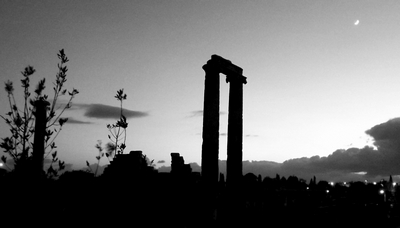Glenn Maffia
ONE of the initial agendas to fulfil whence arriving in old London Town for another festive holiday was to attend the appointment I had arranged with Dr Ian Jenkins, the man who oversees the collection of artefacts from the Apollo Temple, on display at the British Museum.
It was a clear but icily crisp late November morning as I threaded my way through the city’s rush hour to Tottenham Court Road underground station. I was reminded of my own commuter journeys of yore, though was no longer attuned to this swarming mass of bodies.
A clutter of knowledge
I arrived early enough to grab a cup of coffee in the refreshment area before reporting to the Information Desk to announce my arrival.
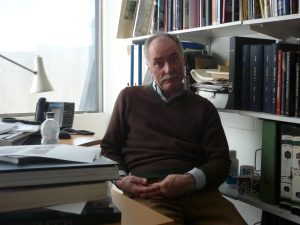
Dr Jenkins
A phone call upstairs, then I was soon being escorted through the labyrinth of corridors by Dr Jenkins’ assistant, Delia, to where his office is located. That walk was fascinating in itself, even passing a marble bust of Charles Newton, the excavator of the Sacred Way statues.
I entered the academic’s office and it certainly looked the part, books and papers cast everywhere upon tables and chairs, a cluttered bookshelf straining at the seams and Dr Jenkins himself silhouetted against the bright but cold light of a large window. I just knew it would be like this.
The light may have been cold but Dr Jenkins’ welcome could not have been warmer. More coffee was ushered in by the ever busy Delia, as Ian and I exchanged platitudes before ambling into the conversation of the Temple of Apollo and the archaeological guide we produced at ‘Voices’ last spring.
Admiration and trust
Dr Jenkins was definitely impressed and full of admiration with our efforts and encouraged me to continue with further enquiries into the site and surrounding area.
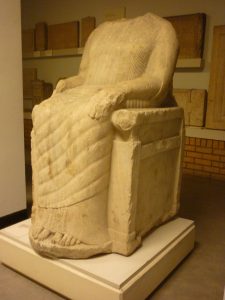
Some of the artifacts from Room 78
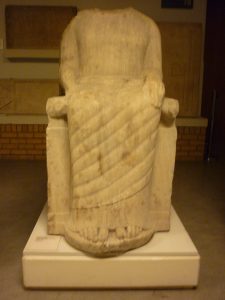
We chatted and discussed for an hour or so before he asked the perpetual motion Delia to escort me along to Room 78, which houses the statues from the Sacred Way that are rarely seen by the general public.
His belief in me was obvious as I was to be allowed to see and study these statues absolutely alone, no escort required. I even had to lock the room after I had completed my viewing. I think I can safely say I had gained his trust.
The statues I concentrated upon were three seated figures similar to the ones on display in the always open Room 13.
Their size and composition were in the same style, being a mix of an influence of Egyptian blended with Hittite features. All three had been decapitated, as are all but one in Room 13.
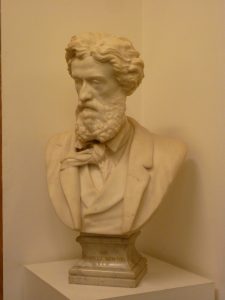
Charles Newton who was instrumental in bringing the Apollo Temple’s presence to the wider world
It is important to remember that these statues were never to be likenesses of their sitters; they were a dedication to the god Apollo, not an ostentatious depiction of personal vanity.
I shall explain the complex modes of thought of the pagan’s belief systems at a later date; suffice to say they were completely differing from the three monotheistic religious beliefs presently held today.
Warm farewell and cold winds
I don’t know how long I was in Room 78, but it must have been some considerable time. Eventually I returned to the Information Desk, via Room 13 to say “hello” to my stone friends from Didim, before the ever suffering Delia arrived to lead me through the labyrinth once more.
Dr Jenkins and I continued our talk for another half an hour; what a polite, amiable and knowledgeable man he is.
I promised to keep him informed of any developments concerning the Temple and its environs, before I donned my overcoat, warmly shook hands with him and ventured back into cold winds of the 21st century.
An absolutely monumental day of the highest success.
